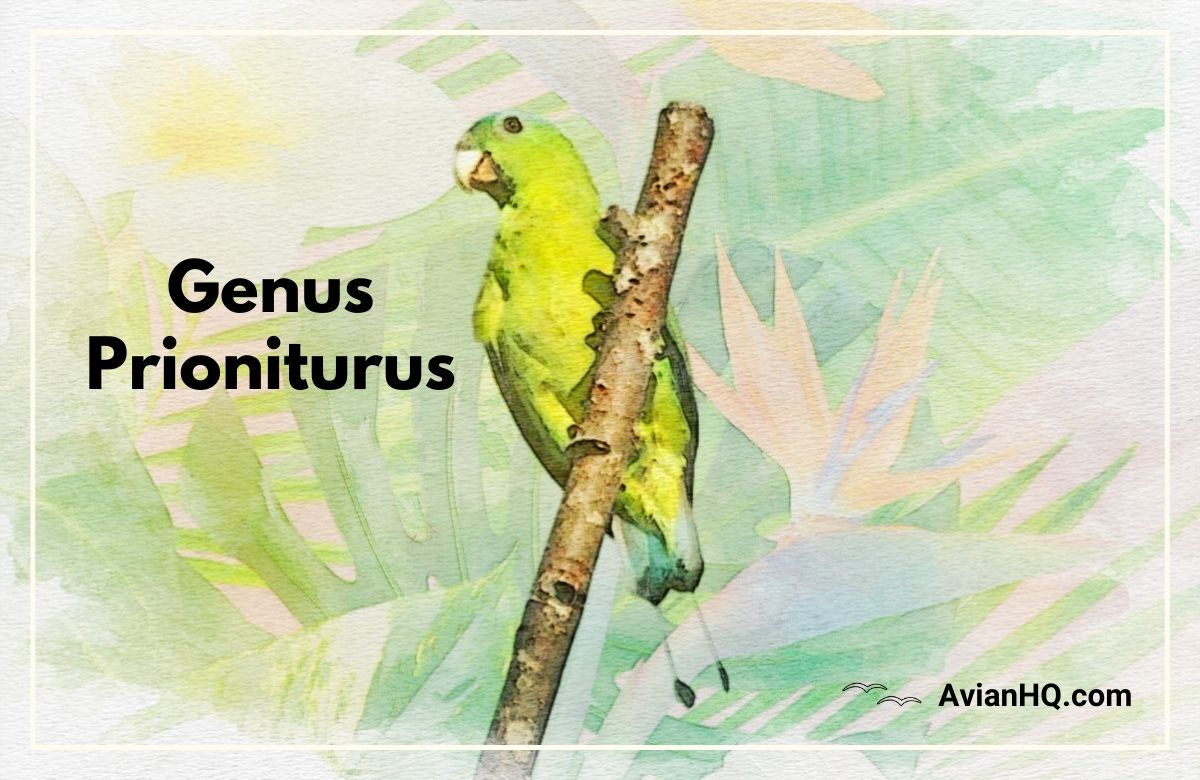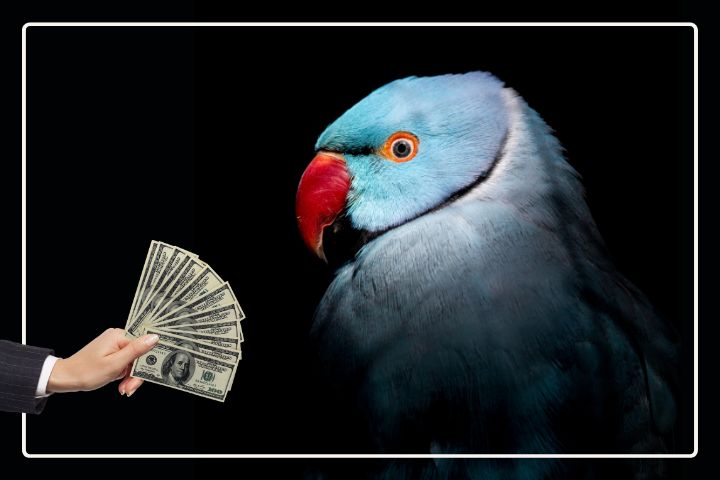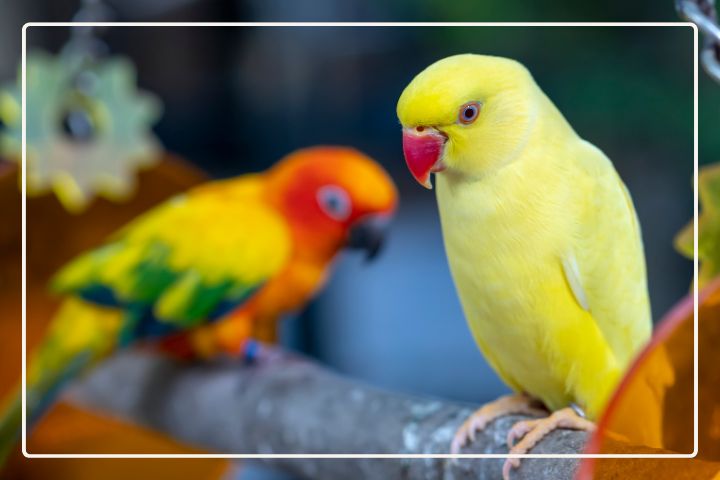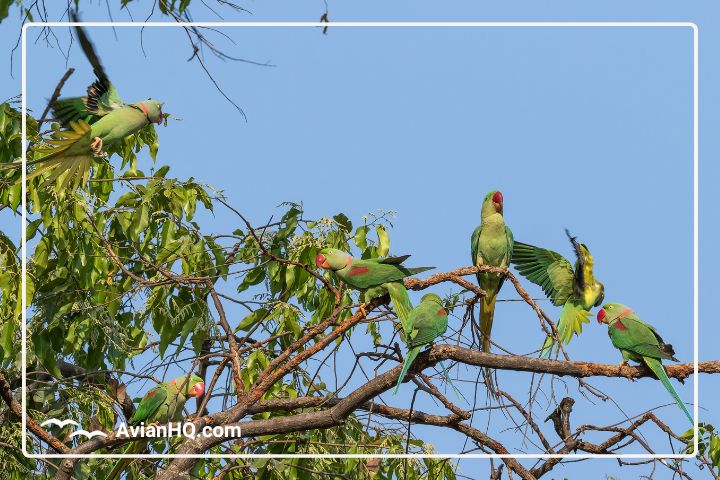Exploring the Genus Prioniturus
The tropical forests of the Philippines and Indonesia are home to some of the most beautiful and unique birds in the world. Among these are the parrots of the genus Prioniturus, from the Family Psittaculidae and Sub-Family Psittaculinae. They are medium-sized arboreal species recognized by their long graduated tails and extraordinarily vivid plumage.
“The racket-tailed parrots are a sight to behold. Their bright colors seem to embody the very essence of these forests.”
While not the largest or most famous parrots, racket-tails have an undeniable charm. Their bright greens, electric blues, sunny yellows, and crimson reds make them visual standouts in the dense forest canopy. When a racket-tail takes flight, revealing its full elongated tail streaming behind like a banner, you can’t take your eyes off it.
The genus Prioniturus belongs to the family Psittaculidae, which includes about 376 species of parrots and parakeets. The genus itself contains 10 known species, all endemic to islands in the Philippines and Indonesia. Though ranging across this region, each species has its own unique distribution and habits. Some, like the Blue-headed Racket-tail, are restricted to just one or two islands.
This diversity mirrors the incredible variety of habitats across the racket-tails’ range. From lowland dipterocarp forests to mountain cloud forests over 1,500 meters high, these birds have adapted to many ecological niches. Yet in every locale, their brightly colored plumage sets them apart.
Overview of Species in the Genus Prioniturus
The 10 known species of racket-tail display a dazzling array of plumage colors and patterns. Though differing in distribution and habitat, they share core features like slender bodies, long tails, and spectacularly hued feathers.
Montane Racket-Tail Parrot (Prioniturus montanus)
Endemic to the mountain forests of Luzon, this species sports bright green plumage accented by rich blue flight feathers. It inhabits elevations from around 1,000-2,000 meters (3,300-6,600 feet).
Mindanao Racket-Tail Parrot (Prioniturus waterstradti)
Found only on Mindanao Island, this racket-tail has primarily green plumage with vivid blue primary feathers on its wings and tail. It resides in mid-mountain forests approximately 500-1,500 meters (1,600-4,900 feet) high.
Blue-headed Racket-Tail Parrot (Prioniturus platenae)
True to its name, this species has a striking blue head and throat, contrasting with its green wings and back. It is endemic to the islands of Panay and Negros in the Western Visayas region.
Green Racket-Tail Parrot (Prioniturus luconensis)
One of the most widespread racket-tails in the Philippines, this all-green species inhabits lowland and mid-elevation forests across multiple islands. It is distinguished by subtle variations in its green plumage tones.
Blue-crowned Racket-Tail Parrot (Prioniturus discurus)
The Blue-crowned Racket-tail lives only on Mindoro Island and is aptly named for its vibrant blue crown. Its wings and back are green, and it has a red undertail.
Blue-winged Racket-Tail Parrot (Prioniturus verticalis)
Also known as the Sulu Racket-tail, this species inhabits rainforests in the Sulu Archipelago between the Philippines and Borneo. As its name denotes, it has brilliant blue wings that contrast with its green body.
Yellow-breasted Racket-Tail Parrot (Prioniturus flavicans)
Endemic to the Tawi-Tawi islands in the Sulu Archipelago, this racket-tail has distinctive yellow underparts that stand out against its green upperparts. It inhabits lowland and hill forests up to 900 meters (2,950 feet) elevation.
Golden-mantled Racket-Tail Parrot (Prioniturus platurus)
The Golden-mantled Racket-tail lives only on the Sula Islands northeast of Sulawesi. It has vibrant yellow plumage on its head, neck, and breast, with green wings and back.
Buru Racket-Tail Parrot (Prioniturus mada)
This Indonesian endemic resides solely on Buru Island, where it inhabits rainforests up to 1,400 meters (4,600 feet) high. It has mostly green plumage with a pale yellow wash on its underside.
Mindoro Racket-Tail Parrot (Prioniturus mindorensis)
The Mindoro Racket-tail, as its name denotes, is endemic to Mindoro Island in the Philippines. It has green upperparts and brilliant red undertail coverts.
Unique Tail Shape and Colorful Plumage
The most instantly recognizable feature of the racket-tails is their distinctive elongated, graduated tail. The central tail feathers can reach up to 30 centimeters (12 inches) long, while the outer feathers are increasingly shorter. When spread in flight, this creates an elongated, racket-shaped profile unlike any other parrot genus. The tail comprises around half the total body length in these agile fliers.
Racket-tails also dazzle with their brilliant color combinations of vibrant greens, electric blues, sunny yellows, and crimson reds. The genus name Prioniturus means “saw-tail,” referring to the serrated edges of the tail feathers. This fringe of color accentuates their graceful shape.
Males tend to have brighter, more vivid plumage than females. Blue and yellow pigments are rarer in the animal world, making the male racket-tails’ hues all the more striking. This likely helps them attract mates and defend nesting territories.
The racketed tail shape probably coevolved with the colorful plumage to maximize visual signaling. In dense forest environments, both long-distance and close-up communication is crucial. When seen up close, the colors are stunning. From afar, the elongated tails and contrasting hues stand out remarkably.
Behavior and Ecology
Racket-tails are arboreal parrots that spend their entire lives in the forest canopy. They use their slender, curved beaks to forage for fruit, seeds, nuts, nectar, and even insects among the branches. Their long tails provide balance and agility in navigating the treetops.
Most species nest in tree cavities, either naturally occurring or excavated by the birds themselves. Racket-tails are territorial and defend their nest sites vigorously. Clutch size is typically 2-4 eggs, which both parents help incubate over a period around 30 days. The chicks fledge in 6-7 weeks but remain dependent on the parents for some time after leaving the nest.
These parrots play an important ecological role as pollinators for rainforest trees. As they forage for nectar and fruit, they transfer pollen between flowers high in the canopy. This facilitates cross-pollination and tree reproduction.
Sadly, some racket-tail species are threatened by extensive deforestation across their island habitats. As lowland forests are cleared for agriculture and development, they lose vital habitat and food sources. Several species are now endangered or critically endangered. Protecting sufficient rainforest areas is crucial to preserving these colorful birds.
Cultural Significance
The racket-tails’ beauty has long been appreciated by indigenous peoples across their range. For centuries, these parrots have featured prominently in the rituals, folklore, and artwork of Philippine and Indonesian cultures.
To the Tagbanua people of Palawan, the Blue-crowned Racket-tail represents a proud warrior and symbol of status. Its long tail feathers were traditionally awarded to esteemed tribal members.
On Panay Island, the native Ati people incorporate racket-tail feathers into ceremonial headdresses called sagay. These vibrant creations are worn in cultural festivals and rituals.
In Indonesian folktales, the racket-tail is portrayed as a messenger that bridges the realm of man and spirits. Its bright plumage and far-carrying calls are seen as ideal for crossing between worlds.
Today, racket-tails remain a powerful icon of tribal identity and heritage. But their significance transcends any one culture. These colorful parrots have inspired awe and fascination wherever they fly.
Conservation Status and Threats
Due to ongoing habitat loss across their island homes, several racket-tail species are now classified as endangered or critically endangered. Deforestation for logging, agriculture, and development has decimated the lowland rainforests these birds depend on.
The Blue-headed Racket-tail, restricted to just two islands, is critically endangered with less than 250 adults remaining in the wild. The Philippine Green Racket-tail and Blue-crowned Racket-tail are both endangered as their forest habitat on Luzon and Mindoro dwindles.
Another threat comes from the pet trade. Racket-tails are valued for their beauty and captive breeding is limited, so poaching of wild birds persists. Growing human populations on the islands exacerbate these threats.
Concerted conservation efforts are needed to preserve remaining habitats and curb trapping. Increased legal protections, more protected forest reserves, and community engagement can make a difference. Ecotourism focused on the racket-tails also provides incentives to conserve them.
More than just another pretty bird, these parrots should be considered flagship species for protecting the incredible biodiversity of the islands they inhabit. Saving the racket-tails ultimately means saving a precious part of our natural heritage.
Conclusion
The racket-tailed parrots of the genus Prioniturus are truly among the most colorful and charismatic birds on Earth. Their brilliant plumage, distinctive elongated tails, and graceful flight make them a marvel to behold. As denizens of threatened forest habitats across the Philippines and Indonesia, they also represent a vital part of these islands’ unique biodiversity.
Sadly, due to extensive deforestation and trapping, several racket-tail species are now endangered. Concerted conservation action is required to ensure these birds don’t disappear from the skies. Beyond preserving their inherent value and beauty, protecting them means protecting a priceless part of our natural heritage.
The racket-tails’ splendor has inspired indigenous cultures across the islands for generations. But their appeal is universal. Just one glimpse of their dazzling colors and distinctive shape leaves an impression for a lifetime. From mountain cloud forests to lowland jungles, the genus Prioniturus is an irreplaceable treasure that must be conserved. There is still much to learn about their behaviors and ecologies. But one thing is certain – these birds bring immeasurable beauty, wonder and value to the tropical forests fortunate enough to be called their home.







